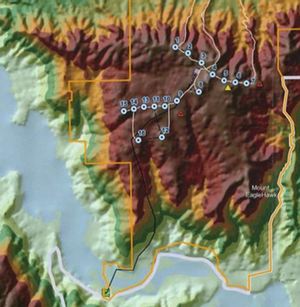Victoria tribunal calls for more health effects evidence during 6-month pause before reaching wind farm permit decision
Health, Human impacts, Wind turbines Add comments A environmental planning Tribunal in Victoria, Australia recently completed 28 days of hearings about a proposed new wind farm above the Trawool Valley. In a recent statement and preliminary report, the Tribunal noted that health effects were the central issue, and that the testimony presented left them still unable to make a clear determination about whether the wind farm will pose an undue impact on human well-being: “In summary the Tribunal has been made acutely conscious of the questions but finds itself in a less than satisfactory evidentiary vacuum regarding the answers.”
A environmental planning Tribunal in Victoria, Australia recently completed 28 days of hearings about a proposed new wind farm above the Trawool Valley. In a recent statement and preliminary report, the Tribunal noted that health effects were the central issue, and that the testimony presented left them still unable to make a clear determination about whether the wind farm will pose an undue impact on human well-being: “In summary the Tribunal has been made acutely conscious of the questions but finds itself in a less than satisfactory evidentiary vacuum regarding the answers.”
UPDATE, 11/27/13: The Tribunal has ruled that the wind farm can be built. It will be the first new wind farm constructed since Victoria adopted a 2km setback standard.
The Tribunal notes that it found the evidence of health effects to be both consistent and convincing, though both the extent of the problem and the cause were far less clear. It also notes that many (though not all) of the health effects referred to in the literature occurred at distances of less than 2km, which is the statutory setback in effect in Victoria. Getting more clarity on how common effects are beyond that distance appears to be at the heart of the Tribunal’s decision to postpone a decision for six months:
The Tribunal considers that the issue of health and wellbeing raises two distinct questions. The first question is whether there is a causal link between sound pressure emissions from wind turbines and adverse health effects on nearby residents. The link may be physiological or psychological. However, given that the respondents expressly disavow that the impact is psychological and that the so-called “nocebo effect” lacks any empirical basis, the inquiry in this case must be as to whether there is a physiological cause. In this regard Mr Cooper hypothesised that wind turbines may emit a particular low frequency “signature” that gives rise to the problem.
One difficulty facing the satisfactory resolution of this question is that there appears to be no overlap of expertise between the acousticians and the health experts. The acousticians can measure the noise but are unable to say what effect it has on human health. The health experts can identify the health issues but are unable to connect those issues with particular levels of noise or sound pressure. It is this that creates the need for interdisciplinary studies.
If the first question produces an affirmative answer, the second and equally important question is what is the incidence of health problems amongst the nearby residential population, and how does that incidence vary or attenuate with distance from the wind turbines. Obviously the problem must be given greater weight by decision makers if 50 per cent of the population surrounding a wind farm is affected rather than 5 per cent.
The full statement linked above (which also has a long section on noise annoyance and sound limits), and an excerpt containing the section on health and well-being, paint a pretty solid and concise picture of the Tribunal’s quandary. The South Australian EPA is conducting a study around the Waterloo wind farm in the next couple of months that may help answer at least some of the questions, and the Tribunal is eagerly awaiting these results. It has also invited both sides in the dispute to submit further information that contribute some of that interdisciplinary insight mentioned above.
UPDATE, 10/23/13: The next round of evidence will be presented to the Tribunal, as requested, this week.
